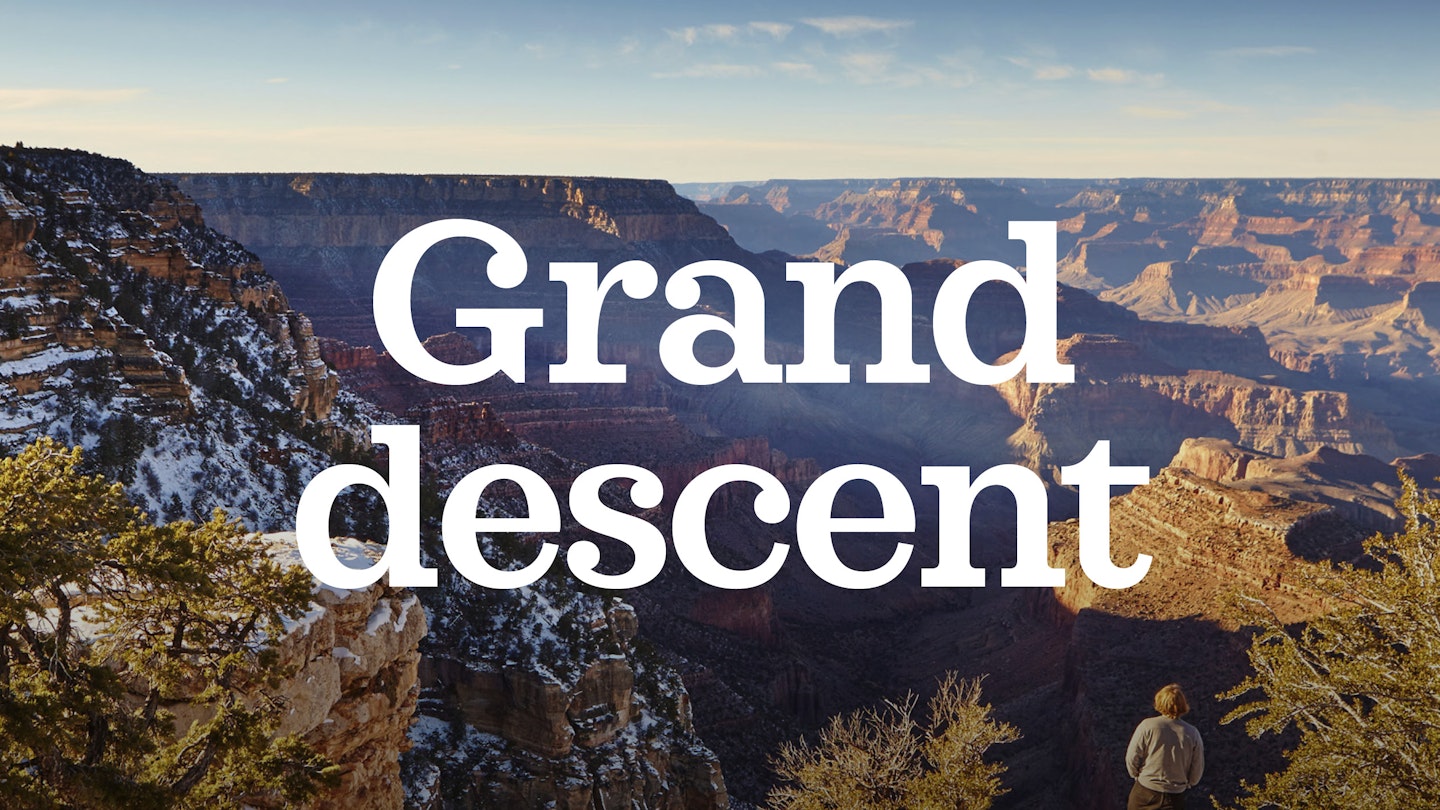
The Grand Canyon is one of America’s greatest wonders. Therefore, an epic off-season walk to the bottom of this mighty crevasse is an experience not to be missed.

For geologists, there’s no place on Earth like the Grand Canyon. Almost two billion years of the planet’s history are encapsulated in the canyon’s mile-high jumble of fossil-laden rock layers, allowing scientists to take a mesmerizing walk back through time.
Preparing for the Adventure
Although science was not my forte, I found myself drawn to the ‘Geology of the Grand Canyon’ course offered in my second year. This course promised not just classroom lectures but also a semester-ending Thanksgiving trek under the full moon into the depths of America’s greatest natural wonder. Consequently, I eagerly enrolled. Two months later, as I drove from the San Francisco Bay Area to the South Rim, I was accompanied by fellow adventurers, united by the soundtrack of the Grateful Dead.
Descending into the Canyon
We arrived just as dawn broke, casting red hues through the cloudy November sky, highlighting the snow atop the canyon rim. Starting from the New Hance trailhead, we embarked on a challenging seven-mile descent to the Colorado River via the Red Canyon ravine, followed by a return via the Tonto and Grandview Trails. Our chosen route was significant due to its geological interest, yet the initial day’s descent proved daunting. The relentless drop took a toll on my knees, making even the simplest stair climb painful for weeks afterward.
Exploring the Landscape
Upon leaving the rim, the environment shifted profoundly. The trail quickly transitioned from snow-covered terrain into a breathtaking landscape characterized by layered desert geology. The intricate formations of Kaibab limestone, Coconino sandstone, and Bright Angel shale, which I had only seen in class, transformed into vivid realities as we descended. The colossal canyon redefined itself as we moved closer, revealing its diverse colors, from reds to ochres, each layer telling a story.
Camping by the River
After a lengthy descent, we finally reached Hance Rapids and set up camp above a sandy beach. Despite the chilly river temperature, the early winter sun warmed our surroundings to a comfortable 15°C, tempting some to brave a quick dip. However, a quick paddle soon reminded me of the icy conditions. Later, as the sun dipped below the horizon, we enjoyed a unique experience: our instructors crafted a makeshift sweat lodge from native willows, alternating between sauna and river for a refreshing experience.
Lessons Learned
Our time at the river became a spontaneous classroom experience. We explored, reminisced about our hiking journey, and discussed geological wonders like Vishnu schist and the Great Unconformity while preparing a makeshift Thanksgiving dinner. The days ahead would require us to climb back uphill from 795m to 2,255m, a feat achievable only for those in peak physical condition.
History and Nature
On our ascent, signs of the region’s rich mining history began to appear as we scaled the Redwall limestone cliffs. We discovered remnants of old mine shafts beneath us and crystals of azurite and malachite adorning the trail. Our last night involved a moonlit exploration, where we gazed over the expanse of the Colorado River, now shimmering in the distant half-light.
Final Ascent
Our route back to the rim retraced the steps once taken by mules hauling copper up from Horseshoe Mesa. Although the Grandview Hotel is no longer present, the trail remains. Returning through the Coconino sandstone felt triumphant as we reemerged at the snow-covered rim, exhausted yet exhilarated—ready to take on this adventure once more, enriched with knowledge about the magnificent rocks that make up the Grand Canyon.
Hiking in the Grand Canyon
The New Hance Trail is one of the most challenging hikes on the Grand Canyon’s South Rim. It is essential that hikers have experience as the trail is not clearly marked. For those less experienced, consider opting for the well-maintained and relatively shady Bright Angel Trail, which offers ranger stations and reliable water sources.
Getting to the Grand Canyon
The closest international airports to the Grand Canyon are Phoenix (approximately 3¾ hours’ drive to the South Rim, six to the North Rim) and Las Vegas (approximately 4½ hours to the South Rim, five to the North Rim).
Best Times to Visit
During summer months (June–September), expect peak visitor numbers and elevated temperatures. Therefore, the shoulder seasons of April, May, and October provide more favorable hiking conditions. Winter walks can also be magical for those equipped for the cold; however, access to the North Rim is restricted during part of the winter months.





